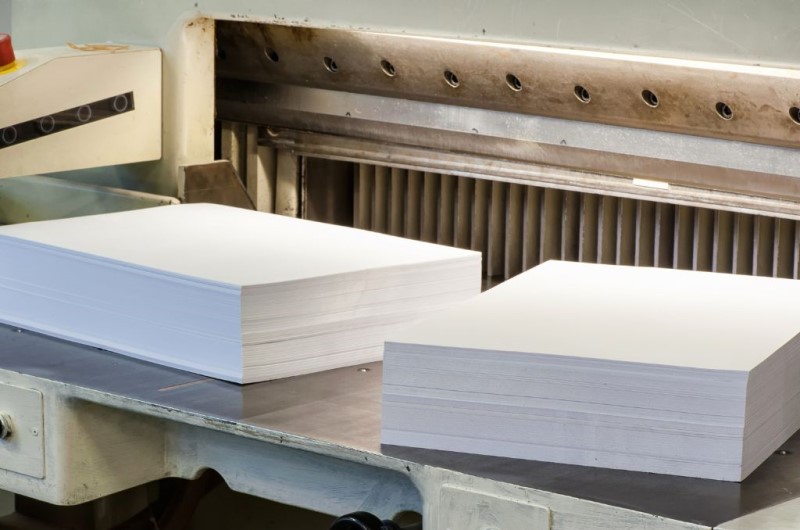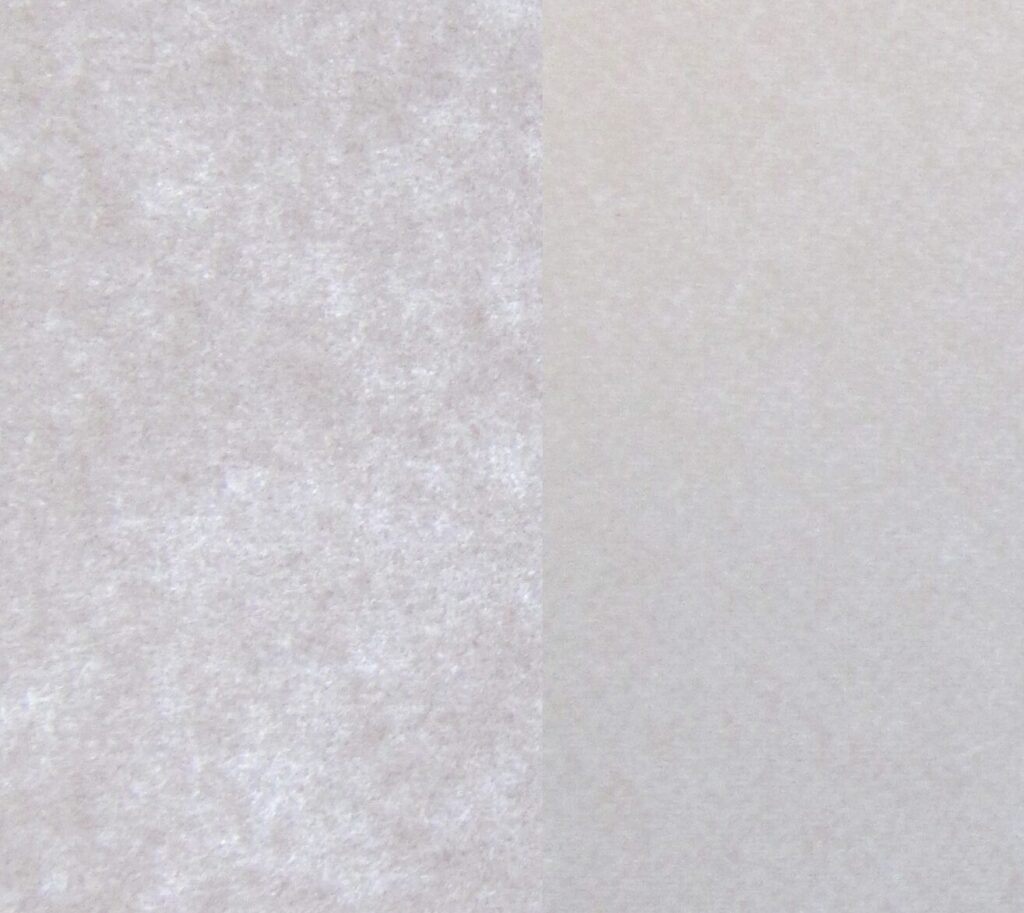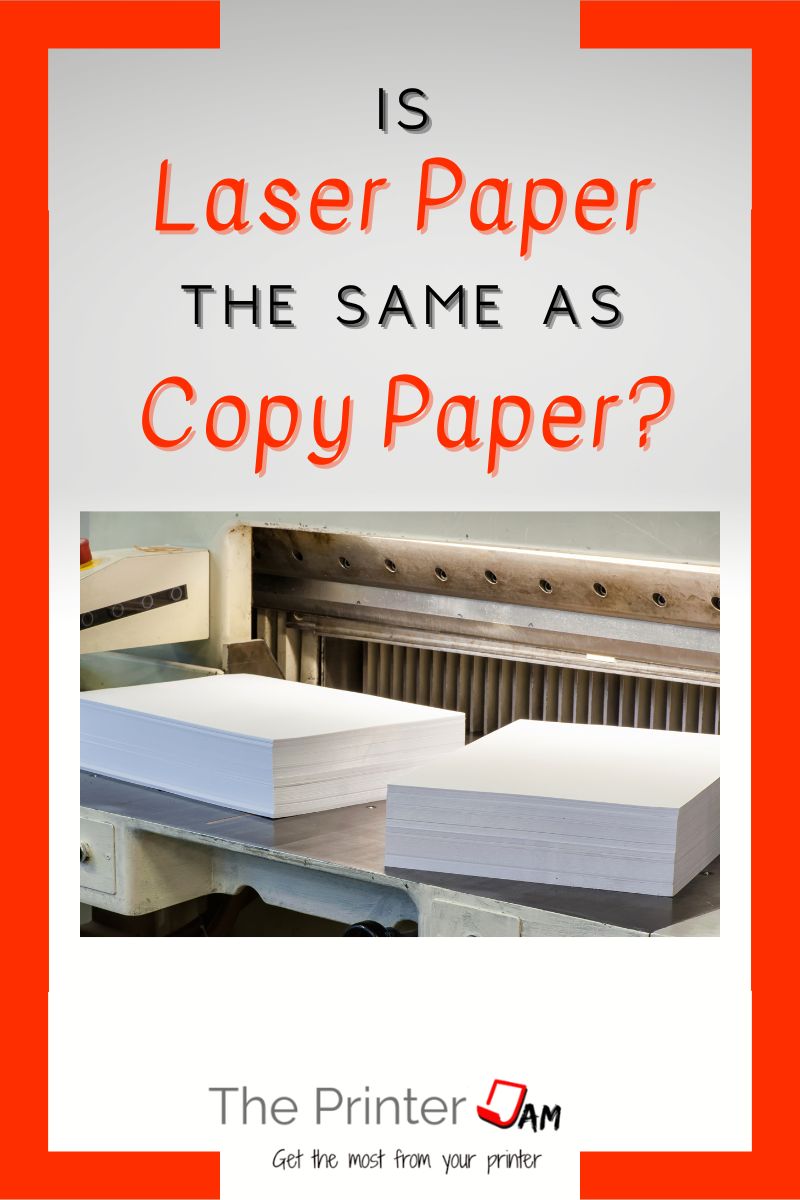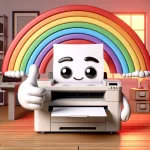
If you’re wondering whether laser and copy paper are the same many people have wondered the same thing. They’re both bond type paper but vary slightly in quality.
Laser and copy paper earned their names from the devices they’re used but they’re both based on bond type paper. Most paper used in inkjet or laser printers is bond type paper. Variances in brightness, smoothness, finishes, thickness, and coating account for all their differences.
While laser paper and copy paper are basically the same, there are dissimilar enough to justify different names.
Bond paper with a cheaper finish, smoothness, or brightness is commonly called copy paper. Cheaper paper is good for copiers which print high volumes of paper. Saving money on paper is an important factor when using tons of paper.
Laser printers comparatively print at lower volumes. What they print tends to be documents of higher importance. Bond paper with better finish, smoothness, or brightness is commonly called laser paper.
It’s all based on the same type paper, but how each manufacturer finishes or coats the paper determines whether it’s labelled laser or copy paper.
Laser and Copy Paper Differences
Laser and copy paper are both acid free bond paper, come in the same sizes, weights, and quantities. They both will last over 500 years.
Yet, there are a few key differences between them. Laser and copy paper differ on:
- Cost
- Smoothness
- Brightness
I know it isn’t much but the cost difference is half a penny. Whoopie! You can save $10 per 5 reams of paper. For the average person there isn’t enough savings to influence our decision to buy one or the other.
However, if you are the purchasing agent for a school this difference will influence their decision. In my experience an average school buys 10 pallets of paper a year. They have to choose between spending $40,000 or $30,000.
That’s a lot of crayons. They can save even more buying cheaper paper, which they often do. Many large or small businesses, hospitals, and government offices look at paper costs this way too.
While the average person isn’t going to see much difference. Buying copy or laser paper in large quantities does impact a businesses bottom line.
Smoothness Difference
The next difference is more noticeable. While they’re both bond type paper, copy paper is made with coarser fibers and laser paper is made with finer fibers. What this means is better color quality.
Paper with a smoother texture creates a more faithful image from an inkjet or laser printer. The difference is only measured in microns, but it is enough of a difference to see in my experience.
If you print an image with both types of paper then hold them side by side. You’ll see the difference too. I can’t print then scan images to upload to the web. But I was able to capture the difference between copy and laser paper by holding them up to a light:

The image on the left is copy paper and the one on the right is laser paper. I know the left side looks brighter but that’s an artifact from the camera. The difference you’re looking for is which is more uniform. You can see there are more lighter and darker areas on copy paper than laser paper.
Since laser paper is made from finer fibers it’s more uniform. While copy paper doesn’t have a consistent cast to it. This difference is slight. However, you can see and feel this difference.
Brightness Difference
As I mentioned, the difference in brightness wasn’t captured in those images. In reality 97 bright is noticeably brighter than 92 bright. Brightness is how white a paper looks. The higher the better. The lower the more grey paper looks.
Copy paper is typically 92 brightness. Though it can range from 88 to 94 brightness. Laser paper is usually above 96 brightness.
Brightness matters for more important documents or color images. Which is why laser paper is used more for resumes or color printing. For schools, business communications, forms, or general printing the lower brightness of copy paper isn’t a factor.
Laser and Copy Paper Uses
While they’re intended for different uses, many times there’s a lot of overlap for how they’re used.
Both types of paper can be used in an array of machines. I’ve seen laser and copy paper used in laser printers, inkjet printers, copiers, cricut machines, duplicators, typewriters, and printing presses to name a few.
While both types can be used anywhere paper is used. Each type has their own suitable application. Copy paper is meant to be used in bulk. Whereas laser paper is for quality over quantity.
Schools, hospitals, businesses, and government offices are the biggest users of paper. These places use many types of paper but copy paper is the bulk of their printing.
They also use laser paper but from what I’ve seen it’s reserved for color printing. Whether it’s an inkjet or laser printer laser paper is appropriate for color printing.
You can use copy paper for color printing. It isn’t terrible. But laser paper doesn’t cost much more. It’s brighter and feels better too. I use laser paper at home. Even though most of the stuff I print I eventually throw away.
Summary
Laser and copy paper are fundamentally the same type of paper. They share many of the same properties as paper used for printing in general. What sets them apart are specific differences in smoothness, brightness, cost, and coating.
Upon close inspection you’ll see differences in how they look and feel. As far as cost they’re less than a penny per page.
While the differences are slight they drive how both are used. It amounts to a quality vs quantity difference. Laser paper is good for color printing whereas copy paper is good for bulk printing.
FAQ
Of course. Copiers and laser printers use the same type of printing.
Laser paper is commonly used in laser printers, copiers, and inkjet printers.
Inkjet and laser printers can use the same paper. The only exception is specially coated photo paper only for inkjet printers.
Copy and laser paper are both bond type paper. However, laser paper has a better finish (smoothness) and brightness than copy paper.

The Copier Guy, aka Dave. I’ve worked on scanners, printers, copiers, and faxes since 1994. When I’m not fixing them I’m writing about them. Although, I’m probably better at fixing them. I’ve worked with every major brand. As well as several types of processes. If it uses paper I’ve probably worked on one.





